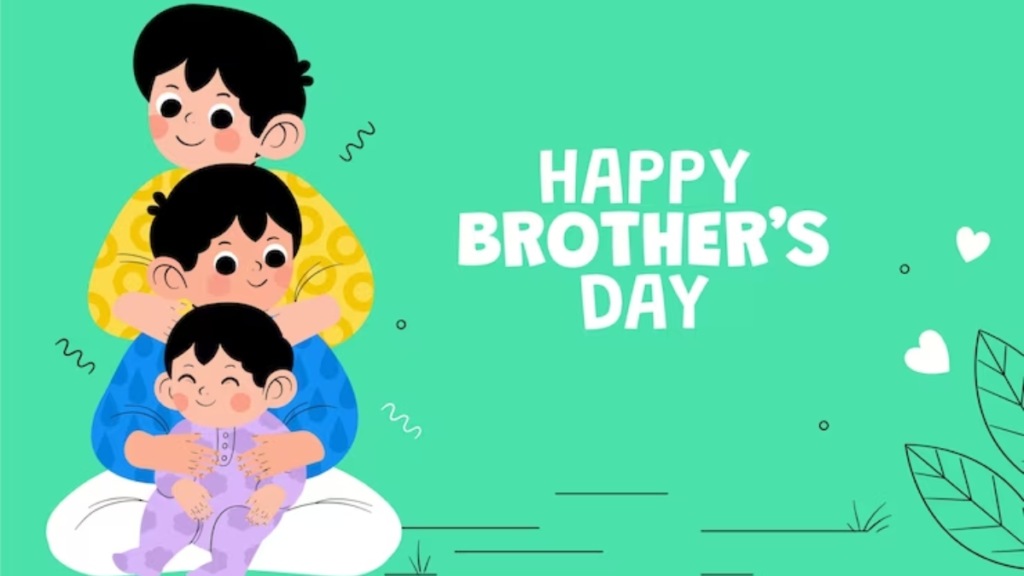
Table of Contents
- Introduction: Time, Siblings, and the Edges of the Earth
- A Quick Look at Brother’s Day: The Global Date
- The Role of Time Zones in Global Celebrations
- Where Does the Day Begin First?
- Where Does the Day End Last?
- Meet the Final Frontier: Baker Island and Howland Island
- Do People Live There? Can You Celebrate?
- Theoretical Celebrations vs. Real-Time Observances
- Why This Matters: Global Unity Through Time
- Conclusion: One Bond, One Day, 24 Hours Apart
1. Introduction: Time, Siblings, and the Edges of the Earth
Brother’s Day is more than a sentimental note on the calendar. It’s a celebration of an irreplaceable bond. But here’s a twist: what if you could follow Brother’s Day as it rolls around the planet, from the first place it begins to the very last place it ends? Welcome to a unique time zone journey—one where celebration meets geography, and where the final toast to brotherhood takes place in a quiet corner of the Earth.
2. A Quick Look at Brother’s Day: The Global Date
Brother’s Day is commonly celebrated on May 24 across the globe. While it isn’t a public holiday in most places, it’s widely acknowledged through social media shout-outs, personal tributes, and family time.
But with Earth’s time zones ranging from UTC+14 to UTC-12, the 24-hour date we casually refer to as May 24 actually spans almost 48 real-time hours globally. That means some people say “Happy Brother’s Day” while others are still asleep the previous night.
3. The Role of Time Zones in Global Celebrations
Time zones were created to keep human activity in sync with the sun. But they do more than determine business hours—they also define when celebrations begin and end. For global observances like Brother’s Day, this adds an invisible layer of intrigue. The day doesn’t start or end everywhere at once. Instead, it travels.
Understanding where the sun rises first—and last—on May 24 gives us a cosmic view of how the celebration unfolds.
4. Where Does the Day Begin First?
The first place on Earth to experience a new calendar day is usually Kiritimati Island (Christmas Island) in Kiribati, located in UTC+14.
On May 24, the people of Kiribati are the first to wish their brothers well. If someone wanted to start a global Brother’s Day wave, this is where it would begin—among the coral atolls of the Central Pacific.
5. Where Does the Day End Last?
On the flip side, the very last place on Earth to experience May 24 is Baker Island and Howland Island, both tiny, uninhabited U.S. territories in the Pacific Ocean, sitting in the unique time zone of UTC-12.
Here, the date May 24 begins a full 26 hours after it begins in Kiritimati—making Baker Island the final frontier for Brother’s Day. If the planet were a stage, this would be the place where the curtain falls last.
6. Meet the Final Frontier: Baker Island and Howland Island
- Baker Island and Howland Island are two specks of land midway between Hawaii and Australia.
- Located in UTC-12, they are officially the last landmasses to end any given date.
- Both are part of the United States Minor Outlying Islands and are administered by the U.S. Fish and Wildlife Service.
- They’re completely uninhabited, visited only occasionally by scientists or sailors.
So yes, Brother’s Day ends here—but in pure theory. There’s no one to celebrate unless you’re sailing nearby or observing via satellite.
7. Do People Live There? Can You Celebrate?
Technically, no one permanently lives on Baker or Howland Island. But if you were on a scientific expedition, a boat, or even flying over the International Date Line, you could claim the distinction of being the last human to celebrate Brother’s Day on Earth.
Imagine sending a message to your sibling from the literal edge of time. Now that’s a gift worth remembering.
8. Theoretical Celebrations vs. Real-Time Observances
While it’s unlikely anyone marks Brother’s Day on Baker Island, the symbolic value is powerful:
- The first celebration happens in the islands of the future—Kiritimati, Samoa, Tonga.
- The last whisper of Brother’s Day fades in the far west of the Pacific, where time itself ends.
From a digital or philosophical standpoint, you could live-stream or schedule posts that align with these time zones—creating a 48-hour global tribute to brothers everywhere.
9. Why This Matters: Global Unity Through Time
This time zone journey isn’t just trivia—it reveals how interconnected we are. Even in remote or symbolic locations, human connection transcends geography.
Brother’s Day becomes more than a local moment. It becomes a global wave of affection, moving hour by hour, from sunup in Polynesia to sundown beyond the Date Line.
It also opens the door to rethinking how we synchronize love, memory, and meaning across borders.
10. Conclusion: One Bond, One Day, 24 Hours Apart
The celebration of Brother’s Day doesn’t end with a clock—it travels with the sun, circling our planet with each time zone. From the sunrise in Kiribati to the final twilight over Baker Island, the love between brothers is stitched into the very rhythm of Earth itself.
So next May 24, consider this: You could start celebrating early—and still have an extra 26 hours to keep the love going.
Because in a world divided by time, brotherhood is one thing that knows no boundaries.

